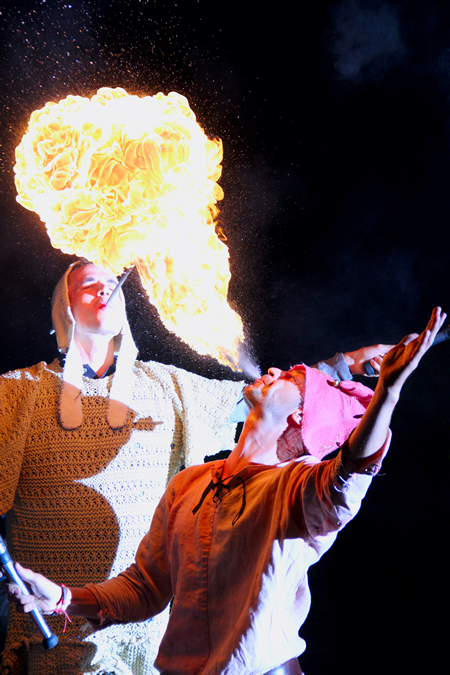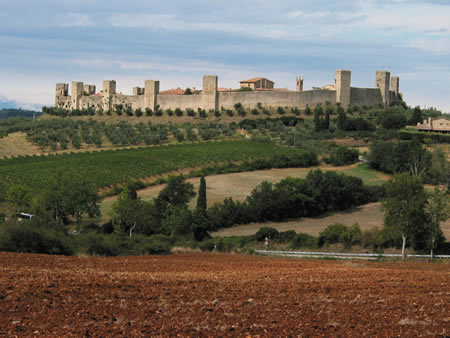Mediaeval festival ''monteriggioni di torri is crowned''
 This is a mediaeval-style festival that takes place every year in mid-July.
This is a mediaeval-style festival that takes place every year in mid-July.
It is a festival reminiscent of the history of Monteriggioni and embraces the cultural traditions of its past, particularly fascinating for the atmosphere that the festival creates thanks to the natural scenery of the village, but also to the strong focus on performances, clothes and the people taking part.
It really does give a sense of going back in time, when in the middle of 1200 Monteriggioni was not only a castle with a garrison, but also a village where everyday life took place.or the occasion all the locals dress in period costumes and play the role of their character: the peasant, the merchant, the soldier, the crossbow man, the friar, so as to make the life of the village more realistic.
The enemy soldiers besiege the castle and take up camp outside the walls. Soldiers of the castle meanwhile guard the entrances to the castle and the walls. The merchants display their merchandise in the stalls. Plague victims go around the town begging for food while monks copy their manuscripts. There are also storytellers, jesters, musicians and villains who come from far-away, to liven up the party.
Artisans proudly show off their ancient crafts such as the farrier, the blacksmith, the carver, the rope maker, the violin maker; real workshops such as minting coins, the water mill and the workshop where paper was produced. And then there are wizards, fortune tellers, sword swallowers and magicians.
Tourists can taste different medieval foods and drinks of that time such as spelt soup, mulled wine and "mulsa” water.
Everything is realistically recreated: no current currency like euros or dollars are allowed; before entering the Castle you have to change your money into the ancient coin of "the shield of Monteriggioni". There are no cars, only horses and mules; no electricity only torches and candles, and so when night comes the town comes alive with a magical atmosphere.
Monteriggioni
The town of Monteriggioni is located in the province of Siena, about halfway between the regional capital and Colle Val D'Elsa. It is easily accessible by the Firenze-Siena freeway from the exit of the same name, but it is undoubtedly one of the most classic and well-known Italian walled towns.
Since the Middle Ages its fame was such that even Dante makes a reference to his 'round circle' in the Divine Comedy (Inferno canto XXXI vv. 40-41).
The walls, almost intact, cover a length of 570 metres and are interspersed with 14 towers and two gates. The Siena gate rises at the base of a tower while the one towards Florence opens in the walls and is defended by one of the towers of the fortified perimeter.
How was Monteriggioni born?
 The village was built by the people of Senesi in the years 1213-1219 on a hill to allow a viewpoint of control and surveillance of the Via Cassia Roman road. Its ideal position allowed you to control the valleys of Elsa and Staggia in the direction of Florence, a historic rival of Siena, which at that time was expanding extensively its territory.
The village was built by the people of Senesi in the years 1213-1219 on a hill to allow a viewpoint of control and surveillance of the Via Cassia Roman road. Its ideal position allowed you to control the valleys of Elsa and Staggia in the direction of Florence, a historic rival of Siena, which at that time was expanding extensively its territory.
The hill where the fortification was erected is natural, although at first sight it might seem like a large 'motte' (named after the classic Norman castles 'Motte-and-Bailey' built on artificial hills and surrounded by an enclosure), and the almost perfectly circular shape of the walls was obtained simply by following the design of the curves of the land.
It was designed in such a way to minimize any weak access points, the gates, connected to the outside by only one single access road crossing from east to west. In Monteriggioni the military precise construction work of its exterior appears physically distinct from the town locked up inside as though the walls form a band of respect around it. However, from what we have learnt about life inside the walls in past periods, it could be said the walls were like a constricting band. The village we see today is essentially authentic as it has not, fortunately, been altered by building work or tourism.
The only changes to its appearance took place in the early sixteenth century when, to try and adapt to the development of new firearms, the towers were lowered and earth was accumulated at the base of the walls in order to obtain a fortified effect, done to give maximum protection against enemy fire.
 English
English Italiano
Italiano